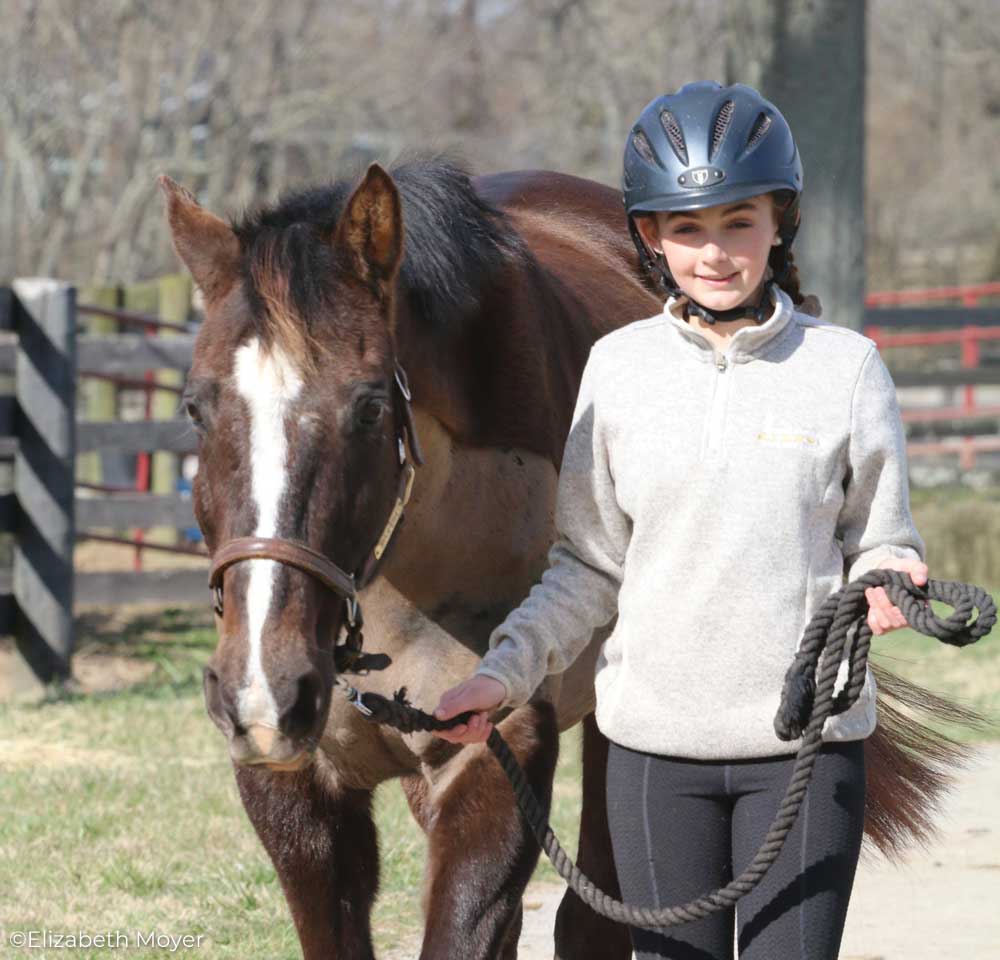 Working near horses and leading them might seem like the simplest thing you do every day, but there’s also a big safety risk if you’re not doing it correctly. To minimize the chance of an accident for you or your pony, follow these tips from the United States Pony Clubs on how to lead a horse the right way:
Working near horses and leading them might seem like the simplest thing you do every day, but there’s also a big safety risk if you’re not doing it correctly. To minimize the chance of an accident for you or your pony, follow these tips from the United States Pony Clubs on how to lead a horse the right way:

- The first tip on how to lead a horse the right way is to make sure you’re always working from the left side of the horse. (See the “Fun Fact” below.)
- Start by holding the rope with your right hand closest to the halter, about 6 inches down from the buckle. Your left hand should hold the excess rope folded up. Remember to hold the excess so the tail doesn’t drag, but don’t wrap the rope around your hand in case something goes wrong. If it’s wrapped around your hand, it can be pulled tight and you can get hurt.
- Ask the horse to move forward by bringing your right hand forward and either clucking or saying “walk.” Look at something out in front of you and start walking. Remember to look where you’re going and not at the horse. If you look at the horse, usually he will stop because he does not know where to go. In some cases, if you look at the horse, he will just decide where he wants to go and take you with him.
- When it’s time to stop, gently pull back on the rope with your right hand and say “whoa” as you stop walking. If the horse continues to pull forward, practice a short, repetitive tug and release to continue to ask him to stop.
PRACTICE TIP 1:
Practice leading a horse around cones, always pushing the horse away from you (turning right) instead of pulling him toward you in a left turn, where he might step on your toes. Next, practice leading your pony into a stall and asking him to turn and face the door before turning him loose.
PRACTICE TIP 2:
Once you feel comfortable leading safely, practice holding the horse for the veterinarian or farrier. When the vet or farrier is on the left side, you should stay on the left side with them. If the vet or farrier walks around to the right side, you should switch sides with them, keeping the horse as still as possible. The reason for this is to keep everyone safe if the horse decides to move. If he becomes upset, you can pull the horse’s head toward you, making his body move away from the vet or farrier.
Keep in mind that some horses get lazy and tired. If you are working on this a lot, it’s good to have multiple horses to practice with.
Fun Fact:
The reason most people work on the left side of the horse comes from medieval times when soldiers and knights carried swords. The sword was always on the left, so for the rider to avoid having to try to swing the sword over the horse, they mounted on the left.
Brought to you in partnership with the United States Pony Clubs Find this lesson in the USPC Manual of Horsemanship Basics for Beginners D-Level (2nd edition), pages 150-153. For more fun lessons like this, join Pony Club! www.ponyclub.org
This article originally appeared in the May/June 2019 issue of Young Rider magazine. Click here to subscribe!





